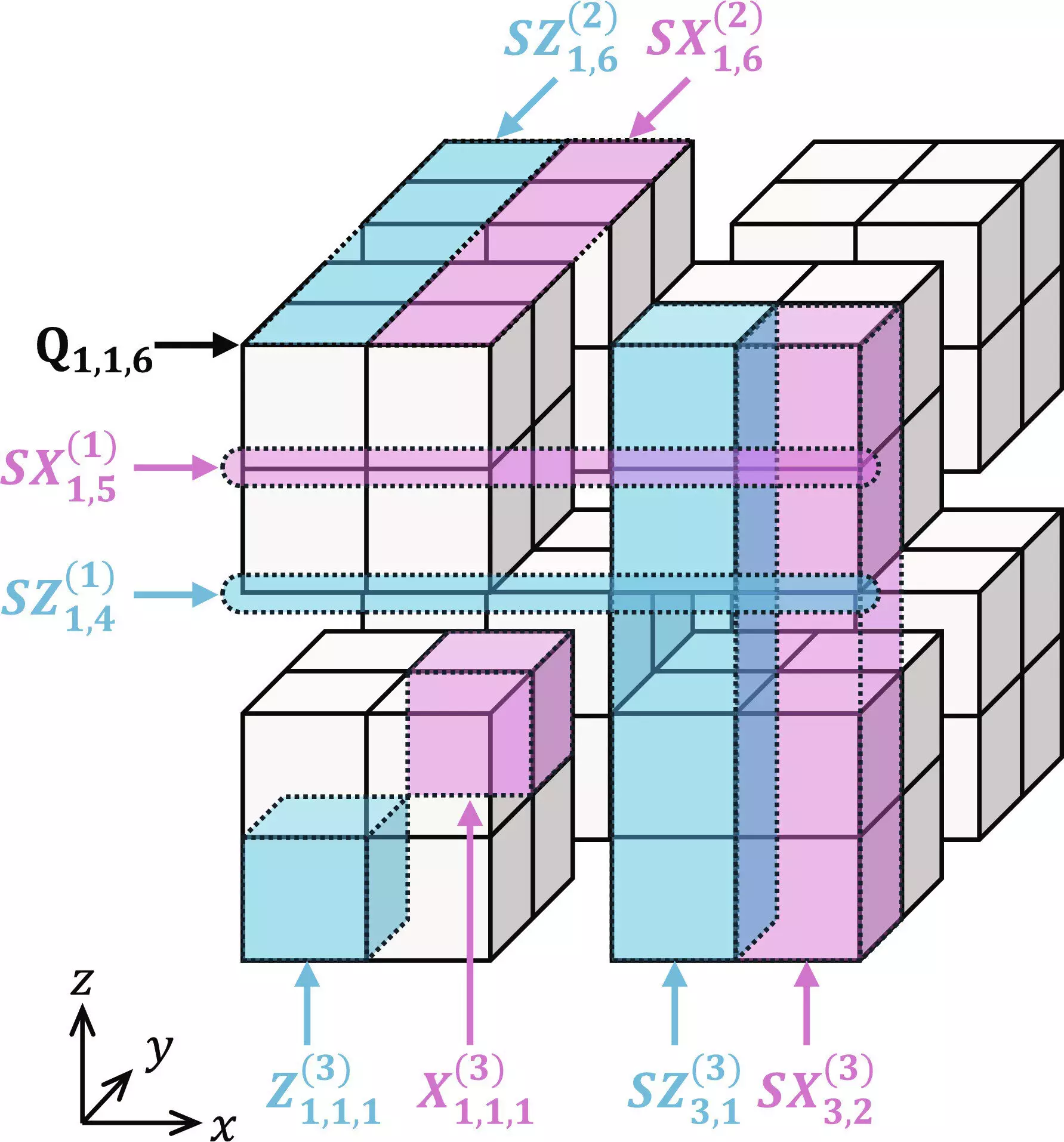Quantum computing has long been seen as the next frontier in computing technology, promising unparalleled processing power and capabilities. However, one of the major hurdles in realizing this potential is the challenge of quantum error correction. In a recent publication in Science Advances, Hayato Goto from the RIKEN Center for Quantum Computing in Japan introduced a novel approach to quantum error correction using “many-hypercube codes.” This innovative method could revolutionize error correction techniques and pave the way for fault-tolerant quantum computing.
The quest for efficient quantum error correction has been ongoing for several decades. Traditional methods involve encoding a single logical qubit onto multiple entangled physical qubits and using a decoder to retrieve the logical information. However, scalability becomes a significant issue with this approach, as the number of physical qubits required increases exponentially, leading to resource overheads. To address this challenge, high-rate quantum codes, such as quantum low-density parity-check codes, have been proposed. While these codes offer higher efficiency, they still suffer from sequential gate setups, limiting their performance.
Hayato Goto’s “many-hypercube codes” introduce a new paradigm in quantum error correction. These codes, based on a high-rate concatenated quantum code structure, offer a unique geometric interpretation. The logical qubits in this approach can be mathematically visualized as forming a hypercube, a complex shape comprising squares, cubes, and higher-dimensional shapes like the tesseract. This geometric structure sets the many-hypercube codes apart from traditional quantum codes, which often have intricate and convoluted architectures.
Central to Goto’s approach is the development of a dedicated decoder that can efficiently interpret information from the physical qubits. By implementing a level-by-level minimum distance decoding strategy, Goto achieves high performance in error correction. This innovative technique enables logical gates to operate in parallel, akin to the parallel processing techniques utilized in classical computing. Goto refers to this as “high-performance fault tolerant computing,” drawing parallels to the high-performance computing systems used for massively parallel tasks.
Achievements and Implications
Goto’s many-hypercube codes have demonstrated remarkable encoding rates, with up to 30% of logical qubits to physical qubits ratio, which is purportedly the highest in the realm of fault-tolerant quantum computing. Despite this high rate, the performance of these codes remains competitive with conventional low-rate codes. This breakthrough opens up new possibilities for efficient error correction in quantum computing and brings us a step closer to realizing fault-tolerant quantum computers that can outperform classical computing systems on specific tasks.
Hayato Goto’s innovative many-hypercube codes represent a significant advancement in quantum error correction techniques. By leveraging the elegant geometry of hypercube structures and implementing a novel decoding strategy, Goto has introduced a high-performance approach to fault-tolerant quantum computing. The implications of this work extend far beyond theoretical advancements, offering concrete solutions to the scalability challenges that have long plagued the field of quantum computing. As researchers continue to explore and refine these novel error correction methods, the prospects for practical quantum computing grow ever more promising.


Leave a Reply